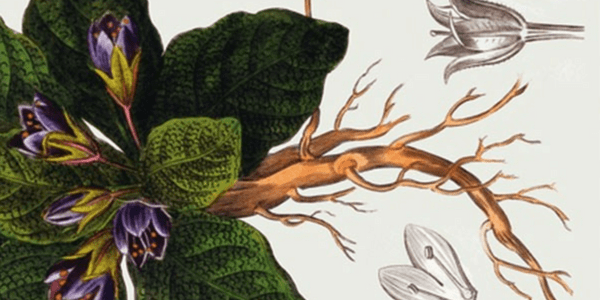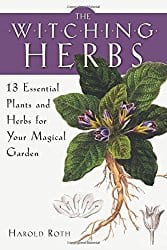The Witching Herbs: 13 Essential Plants and Herbs for Your Magical Garden, by Harold Roth
Weiser Books, 9781578635993, 288 pp., 2017
As a witch, I’ve always felt that I should have a way with plants, but growing them (or even keeping them alive) has never been as easy as I’ve hoped. In theory, it’s incredibly simple — if you put some seeds in the ground and water them, especially in the spring, some of them will start to grow. In practice that’s often true, but unfortunately that’s the easy part. Still, I keep trying. I hear there are lots of benefits to growing your own food and herbs and, if you believe in the wisdom and power of plants, it makes sense that there would be benefits. If you’re not convinced already, Harold Roth makes a pretty good case for learning to do it in The Witching Herbs: 13 Essential Plants and Herbs for Your Magical Garden. You can learn a lot about a plant’s personality and powers by studying the way it grows and behaves in a more or less natural habitat. Though, of course, there are other benefits to growing your own plants, like being sure of the quality and source of your herbs.
For example, clary sage is a biennial which spends its first year putting energy into growing roots, and the next into growing up toward the sun — which relates to its magical nature as an ally that can help to unite solar and lunar energies or, in general, integrate multi-faceted ways of being in the world. This is one of my favourite chapters, both because it introduces a less well-known magical plant and also because it works in some detail about creating tinctures (additional herb-work information like this is woven throughout the book).
I was expecting a lot of arcane lore in this book, and I wasn’t disappointed, but the amount of accessible and detailed information about gardening in general was a nice surprise, and probably my favourite part of the book. A lot of it is really practical stuff about what helps seedlings thrive in a variety of circumstances and how to identify the most common problems that they might be having, but there’s a magical and really readable perspective woven through all of it, with tips on connecting energetically, and a deep respect for the plants themselves.
The meat of the book is in-depth profiles of fifteen magical herbs. Yes, mandrake and belladonna are in there, but so are wild tobacco, mugwort, clary sage, and poppy as examples. There are some interesting bits of magical trivia, but again what stands out is the wealth of practical advice. There are detailed growing instructions for each plant, which is handy because some of them — I’m looking at you, mandrake — are apparently pretty picky.
For example, several of these plants require the freezing temperatures of winter in order to germinate, which means that the basic plant-and-water process won’t work on them. So, the book gives detailed instructions for four different types of cold-stratification to simulate these conditions, along with the pros and cons of each method most appropriate for each plant. Even wary gardeners like me will be left feeling optimistic about their chances. Roth is also the proprietor of Alchemy Works — a major source for magical seeds and plants — so it’s nice to know that these details are coming from somebody with a lot of first-hand experience and a particular passion for occult gardening.
There are also a lot of suggested uses for the plants. This includes a variety of edible and inedible preparations, though it’s worth noting that the suggested uses for the baneful herbs are all of the decidedly non-baneful sort. Regardless of your specific goals, though, The Witching Herbs: 13 Essential Plants and Herbs for Your Magical Garden is a really solid resource for anyone interested in cultivating and getting to know some witchy herbs better.










